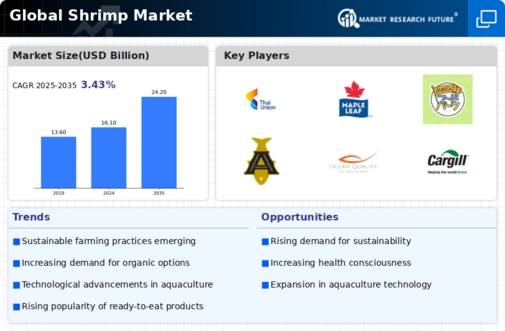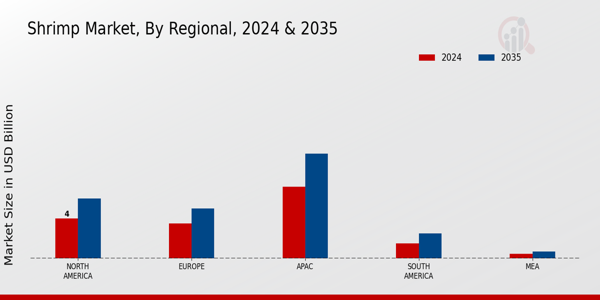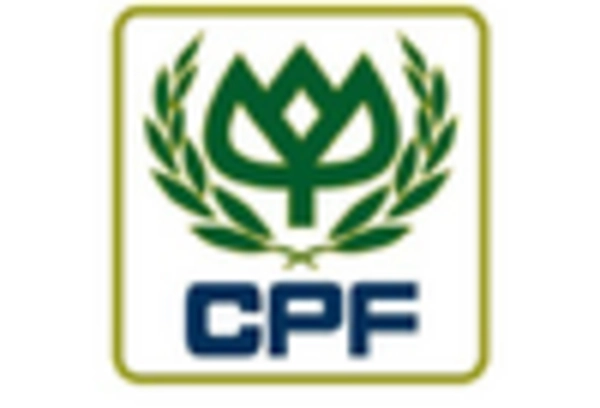E-commerce Growth
The rapid expansion of e-commerce platforms is transforming the way shrimp products are marketed and sold within The Global Shrimp Industry. Online grocery shopping has gained popularity, particularly among younger consumers who prefer the convenience of home delivery. This shift is prompting shrimp producers to establish a robust online presence, allowing them to reach a broader audience. In 2025, it is estimated that online sales of shrimp products could account for nearly 25 percent of total sales, reflecting a significant change in consumer purchasing behavior. The ability to offer fresh and frozen shrimp through e-commerce channels is likely to enhance market accessibility and drive growth within The Global Shrimp Industry.
Global Trade Dynamics
The dynamics of The Global Shrimp Industry. Trade agreements and tariffs can significantly impact shrimp import and export activities, influencing market prices and availability. Countries that are major shrimp producers, such as India, Vietnam, and Ecuador, are increasingly focusing on expanding their export markets. In 2025, it is projected that shrimp exports could grow by 10 percent, driven by favorable trade conditions and increasing demand from international markets. This trend underscores the importance of understanding The Global Shrimp Industry, as they can create both opportunities and challenges for producers.
Rising Health Awareness
The growing awareness of health benefits associated with shrimp consumption is propelling The Global Shrimp Industry forward. Shrimp is recognized for its high protein content and low fat levels, making it an attractive option for health-conscious consumers. In recent years, the market has seen a surge in demand for shrimp products that are marketed as healthy alternatives to red meat and processed foods. By 2025, it is anticipated that the health-focused segment of the shrimp market could expand by 20 percent, driven by increasing consumer interest in nutritious diets. This trend is likely to encourage producers to innovate and offer products that cater to health-oriented consumers within The Global Shrimp Industry.
Sustainability Initiatives
The increasing emphasis on sustainability within The Global Shrimp Industry is driving significant changes in production practices. Consumers are becoming more aware of the environmental impact of shrimp farming, leading to a demand for sustainably sourced products. Certifications such as the Marine Stewardship Council (MSC) and the Aquaculture Stewardship Council (ASC) are gaining traction, as they assure consumers of responsible sourcing. In 2025, it is estimated that sustainably farmed shrimp could account for over 30 percent of the total market share, reflecting a shift towards eco-friendly practices. This trend not only appeals to environmentally conscious consumers but also encourages producers to adopt better practices, thereby enhancing the overall reputation of The Global Shrimp Industry.
Technological Advancements
Technological innovations are reshaping The Global Shrimp Industry, enhancing efficiency and productivity. The adoption of advanced aquaculture technologies, such as automated feeding systems and water quality monitoring tools, is becoming increasingly prevalent. These technologies enable farmers to optimize growth conditions and reduce waste, leading to higher yields. In 2025, it is projected that the integration of technology could increase shrimp production by approximately 15 percent, addressing the growing global demand. Furthermore, the use of data analytics in shrimp farming allows for better decision-making, potentially improving the sustainability and profitability of operations within The Global Shrimp Industry.


















Leave a Comment